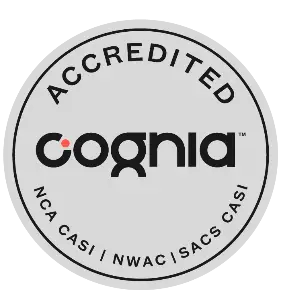Important Considerations for a Highly Personal Decision
Choosing Insurance Benefits is a highly personal decision. A single, 26 year old, in good health has very different benefit needs than a middle aged employee with high blood pressure and a family. No one understands your needs better than you, and it is important that you decide which benefits will work best for you and your family. There is not a one size fits all benefit option.
We have prepared a benefit booklet to help you make your insurance decisions. We have made an effort to provide you with a considerable amount of choice concerning your benefit options. This Benefit Guide provides a concise overview of the plans the District offers. We suggest that you spend a few minutes becoming familiar with your options.
Before you make a decision on benefits we encourage you to take an inventory of your medical needs and preferences for yourself and your family. The following are suggestions of things you can do to help you in deciding what benefits are right for you.
- Make a list of all the special health concerns in your family.
- Consider how frequently you and or family require medical attention.
- List your preferred doctors, dentists, clinics and hospitals.
- Estimate what you spend annually on medical expenses.
- Consider how much you can afford to pay for benefits, and how well you manage your finances.
All of the above considerations can have an impact on your Insurance selections and understanding these aspects will help you in making a good decision. If you have questions concerning your insurance options feel free to contact the Insurance Department for assistance at 801-826-5428.
Choosing a Plan: Step-By-Step Guide
Step 1: Traditional vs Qualified High Deductible Health Plan
The choice between the Traditional plan and the Qualified High Deductible Health plan is a choice that rests on your personal feeling about security vs control. The Traditional plan is more about security. You pay a higher monthly premium but you pay less for the deductibles and the out of pocket maximum. Conversely, you also pay a higher monthly premium even if you don’t require any medical care during the year. The High Deductible plan is more about having control over your health care dollars. You pay substantially less in premium and in exchange you will be expected to cover more of your upfront costs based on the deductible and out of pocket maximum. To help manage the insecurities associated with this plan, the IRS allows you to set money aside in a Health Savings Account (HSA). The funds in this account can be used to cover the costs you may incur. A very risk averse person would likely lean toward the Traditional plan, and a person who wants to have more control over how their health care dollars are spent will likely lean toward the High Deductible plan.
Step 2: Advantage Network vs Summit Network
This choice rests on which network you prefer. The Advantage network is mainly the Intermountain Health Care (IHC) network, whereas the Summit network is essentially the Non–IHC affiliated hospitals and clinics. This would include Mountain Star, Iasis, and the University of Utah Health Care clinics and hospitals. Some individuals might have strong opinions toward one network or the other, while others don’t really care at all. The plan designs are equivalent and you should receive excellent care through both networks. If you don’t have strong feelings toward one or the other, you may want to look at the list of covered hospitals on page 8&9 of the benefit guide, and select the network with the hospital closest to your home.
Step 3: Base vs Plus
This question concerns out-of-network coverage. While the base option has regional network agreements that allow participants to receive emergency services out of the Utah region, they don’t provide any kind of out-of-network benefit. The Plus option allows you to have out-of-network coverage. There are two advantages to the Plus option: first, some participants who travel might have concerns about finding a doctor to treat a medical need while traveling. This option allows them to get services almost anywhere. Second, some people might be treated for a condition by a specialist that may not be in their preferred network. The Plus option allows them to have coverage for this out-of-network specialist. The additional cost is substantial, so you will want to consider your projected out-of-network costs carefully before selecting this option.
- 2025 Benefit Materials
| Title | Size | Hits | Date modified | Download |
|---|---|---|---|---|
| 2025 Benefit Guide 11.25.2224 | 6.19 MB | 540 | 11-25-2024 | DownloadPreview |
| 2025 Open Enrollment Guide | 824.58 KB | 394 | 10-17-2024 | DownloadPreview |
| OE Information Letter | 163.20 KB | 198 | 10-17-2024 | DownloadPreview |
| Open Enrollment 2025 Flyer | 596.07 KB | 203 | 10-08-2024 | DownloadPreview |
| Canyons SD STAR No Swing SBC 2025 | 149.29 KB | 179 | 10-17-2024 | DownloadPreview |
| Canyons SD STAR SBC 2025 | 149.60 KB | 176 | 10-17-2024 | DownloadPreview |
| Canyons SD Traditional Plus SBC 2025 | 149.82 KB | 172 | 10-17-2024 | DownloadPreview |
| Canyons SD Traditional SBC 2025 | 149.34 KB | 180 | 10-17-2024 | DownloadPreview |

